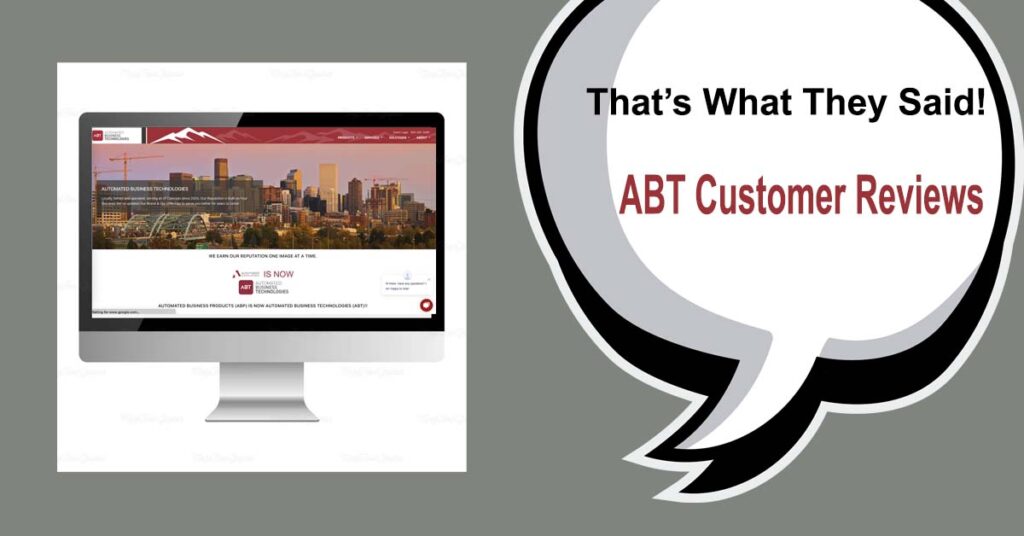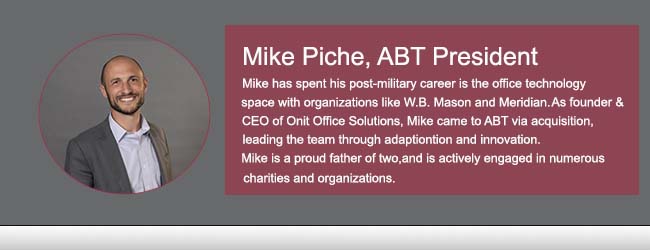I get it. The copier, printer, multi-function device, “paper-eating coffee table” in your office is the necessary evil that you have to deal with every three to five years—and of course, whenever it doesn’t work. It’s the thing you want nothing to do with but can’t live without. I’m going to avoid marriage jokes here.
That said, a copier lease can feel like a marriage.
How to Choose the Best Copier for Your Business
It’s long and mostly permanent. There are good days and bad. So, in order to get the most of your marr—copier lease, you need to start by picking the right partner. Picking the right partner is twofold. For one, you need the right device. You need the device with the right functionality, durability, size, power requirements, and of course price (this is where the marriage analogy ends, don’t worry). Second, you need the right copier service provider for that device. You need a partner with the technical expertise, commitment to customer service, reliability, and of course, the right price.
Let me give you a few things to look for as you choose the right copier and the right service provider. We’ll start with the service provider since this is where you can get the most bang for your buck.
Find the Best Copier Service Provider
Your service provider will typically be the same company that sells you your copier; not always but most of the time. For this reason, it is important to take note of how your service provider treats your during the sales process.
Are they consultative in their approach? Are they looking for problems with document workflows in your business and matching the solution to the problem, or are they just trying to sell you a machine? Are they guiding you through the contract process, or are they looking for a quick signature?
The tone is important here because any company that is looking for a quick sale or that views you as a “transaction” is less likely to be concerned about your experience on the backend of the sale when customer service comes into play. A company that takes a consultative, customer-based approach to helping you choose your device is more likely to have helped you choose the right device, and this is the first step in avoiding long-term problems with the servicing of the device. A device that can’t handle your volume, doesn’t integrate well with your systems, or lacks critical functionality can be more like a paper weight than an enhancer of your business processes.
Next, it is important to understand how the service provider is going to service your device. How many technicians have trained on your device? This has obvious implications for how quickly you receive service when things go wrong. What is the guaranteed response time? The industry standard is 4 business hours to have a tech onsite. Will you have the same technician every time? In other words, are techs assigned to territories, or could you be receiving service from a tech that’s three counties away?
Once again, this matters for response time. Are those technicians authorized and certified on your device? If not, this could have implications for your warranty. Is preventative maintenance automatically scheduled? Preventative maintenance is key to maintaining high uptimes. Lastly, are there any guarantees that the provider offers related to service uptime and service response?

So, what should a service plan cost you?
Typically, a copier service plan will be based on how many pages you print. The provider will charge you one cost per page for every black and white page printed and usually a significantly higher price for every color page printed. This includes both prints and copies.
Some companies also charge for scans, so you should make sure to ask about that. With your cost per page, you will typically receive all toner, parts, maintenance, and repair. It’s important to find out if staples, freight, and networking are included. Often, those items are charged separately. You should know what rates they are charging you for those items. Depending on the copier, your rate can range wildly from .03 per black and white page to .004 per black and white page. On the color side, you could pay from .15 per color page to .04 for color page.
The cost per page is dictated by the efficiency of the machine.
Generally, the larger (more expensive the machine) the lower the cost per page. A large production device that can safely print 200,000 color pages per month is going to have a much lower service cost than a 10-year-old desktop inkjet printer that you bought on sale at the local office supply store.
This is why it is so important to make sure you have the right machine upfront. You might pay a little bit less for your equipment by getting a less efficient device, but then you may get overwhelmed by excessive service costs.
Lastly, on the price front, some companies will sneak in small charges that are unexplained in the sales process; beware of insurance charges, administrative fees, meter collection fees, etc. because they can add up quickly.

Choosing the Right Copier
There are plenty of things to consider when trying to choose the best copier. First, you have a variety of brands to choose from. Then, you have several different options and accessories to sort through. It’s important to ask yourself the following as the primary consideration:
“What am I trying to do with this device?”
Sure, you are trying to print, scan, and copy, but do you need to fax? Yes, some companies still need the ability to fax, particularly healthcare and financial services. Do you need automatic stapling? Hole punch? Are you making booklets? Do you need to scan-to-email, folder, cloud applications, or somewhere else? Do you need to account for prints and copies by employee, client, or department?
These are just a few of the questions you need to ask yourself when you are choosing a copier. So, determine what problem you are trying to solve and work back from there to identify the software and accessories you need to solve the problem most efficiently.
There are nuances to each brand that should be investigated as well. Some brands will offer better reliability and service rates, like Canon and Epson. HP offers best-in-class security features that can really enhance the value in healthcare and financial services. Kyocera offers the most complete set of applications to improve workflow processes. Xerox and Canon are known for better imaging and color quality. Then, of course, you have differences in price across brands. Most of the brands will have similar prices for comparable machines, but there can be meaningful differences in price in some cases.
The Bottomline
At the end of the day, choosing a provider and a device comes down to a thorough discovery process.
- First, determine what problems you are trying to solve.
- Second, apply a solution or set of solutions to those problems.
- Then, look at pricing across varied brands and models.
- Make sure to include service in the total cost of ownership calculation.
Having a provider that is brand agnostic and that can consult with you throughout the process will help streamline the decision-making process and find you the best fit for the best price. A valuable provider can help guide you through the nuances of the brands, the pros and cons of different financing arrangements, the benefits of diverse types of service plans, and the installation process.
Having a company that can guide you through the installation process can be particularly valuable when ending a lease on a current piece of equipment. Often, lease agreements are extremely specific about how, when, and where devices must be returned to the leasing company or service provider.

